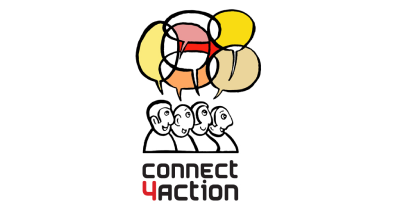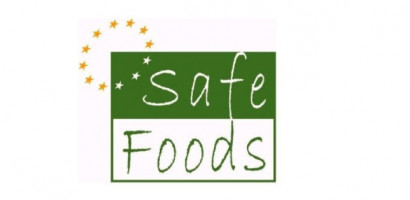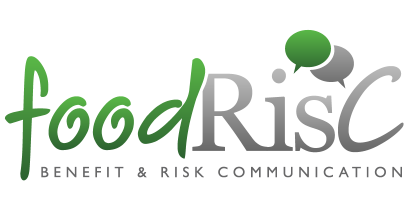Benefit and risk communication (FoodRisC)
Last Updated : 17 April 2014FoodRisC ended in October 2013.
Follow the latest news about FoodRisC on Facebook or Twitter!
Science Brief: 'Differences in social media and traditional media in reporting a crisis' about the pros and cons of traditional and social media in food crisis reporting.
Science Brief: Read about a study by the French Agency for Food, Environmental and Occupational Health Safety (ANSES) about the optimum amount of seafood which should be consumed each week.
Press release: 'Social media to improve food risk and benefit communication' about the fundamental role of social media as disseminators of food risk and benefit information.
Latest podcast: Listen to Adrian Moss, Managing Director of Focus Business Communications, discussing FoodRisC research dealing with the role of social media during a food crisis. His team was responsible for the evaluation and selection of suitable monitoring software and the tracking of food crisis in real time during 2011 as well as a previous incident from 2008.
Latest report: Click to find out about the project activities in the first 18 months of the FoodRisC project.
Podcast: Listen to FoodRisC research leader Wim Verbeke talking about his work on the conceptualisation of food risks, benefits and crises.
Podcast: Hear about the new FoodRisC tool Vizzata (formerly known as EnGauge) from Julie Barnett, FoodRisC researcher from Brunel University.
Podcast: Listen to FoodRisC researcher Áine Regan talking about her work analysing traditional and social media coverage of the 2008 Irish dioxin crisis.
Podcast: Listen to Kate Trollope, Editor of EU Food Policy talk about the FoodRisC project.
Podcast: Listen to coordinator Professor Patrick Wall introducing FoodRisC.
Read more about the FoodRisC project in this first Food Today article: 'Evaluating perceptions and communication of food risk & benefit across Europe'.
FoodRisC: Perceptions and communication of food risk/benefits across Europe
As customers, we receive a lot of information about the food we eat. Every day, we are bombarded with legitimate but sometimes unjust information about the benefits of certain foods and the harmful effects of others. Recent evidence suggests consumers are concerned over their food supply. Understanding current barriers to communicating the risks and benefits of food and identifying potential remedies for such challenges are the objectives of the European Commission-funded project FoodRisC. This project seeks to produce a practical toolkit for policy makers, food authorities and other parties from the various EU member states that enables effective and balanced food risk communication.
The objectives
The FoodRisC project has four major objectives:
As customers, we receive a lot of information about the food we eat. Every day, we are bombarded with legitimate but sometimes unjust information about the benefits of certain foods and the harmful effects of others. Recent evidence suggests consumers are concerned over their food supply. Understanding current barriers to communicating the risks and benefits of food and identifying potential remedies for such challenges are the objectives of the European Commission-funded project FoodRisC. This project seeks to produce a practical toolkit for policy makers, food authorities and other parties from the various EU member states that enables effective and balanced food risk communication.The FoodRisC project has four major objectives:
- Describe key configurations of food risk and benefit relationships and the implications for communicators.
- Explore the potential of new social media (e.g., blogs and social networks, such as Facebook and Twitter) and provide guidance on how risk communicators can best use these media for food risk and benefit communication.
- Characterise the ways in which consumers attain, interpret, and utilise information to help target populations and tailor messages.
- Propose a strategy and communication toolkit for the effective communication of coherent messages across EU Member States.
The research
Balanced food risk communication remains a challenge across the European Union (EU), with on-going public concern about food supply contaminants, technological advancements, and diet-related diseases (e.g., diabetes and obesity).The FoodRisC project seeks to address these communication challenges by characterising key food risk and benefit relationships, exploring the potential of new social media, and providing a systematic understanding of how consumers deal with food risk and benefit information.
The objectives will be met through a range of research approaches and methods that extend the traditional framework of food risk and benefit communication. Traditionally, the food communication framework relays information from an authoritative source through a classical media channel (e.g., television, internet, print) to consumers. The FoodRisC project adapts the traditional communication model to include the active role of recipients of the information, and incorporates the way in which various demographic variables (e.g., gender, socioeconomic status, age) serve as barriers to consumer understanding.
The consortium
The FoodRisC consortium is comprised of experts in key fields relevant to food risk and benefit communication from research institutes, consumer organisations, and SMEs in ten EU Member States. The consortium is supported by an Advisory Board of representatives from eight renowned organisations in health communication (including the European Food Safety Authority, the World Health Organization, and Google) and coordinated by Professor Patrick Wall of University College Dublin’s School of Public Health and Population Science.
The outcomes
FoodRisC seeks a European level impact with the development of the FoodRisC toolkit together with practical guidance to enable the effective communication of coherent messages across EU Member States. The toolkit will integrate information gathered on barriers to consumer understanding with novel approaches to overcoming such barriers.
Further information
Go to www.foodrisc.org



